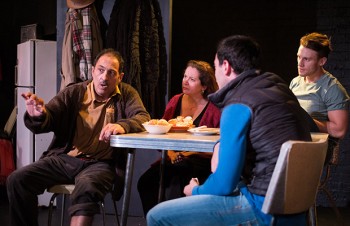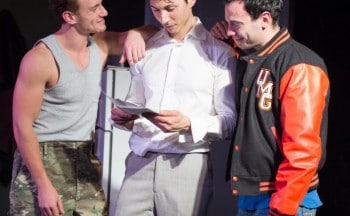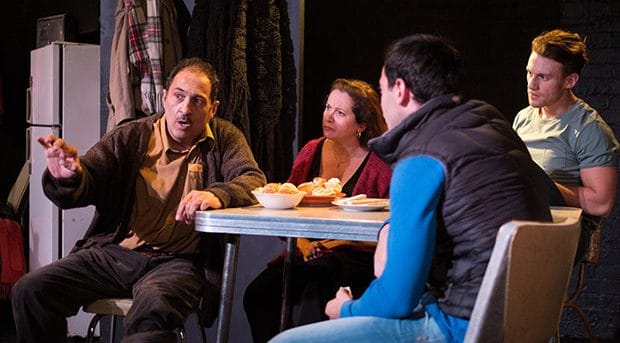Review: The House of Ramon Iglesia — The Old Fitz Theatre
The House of Ramon Iglesia sits comfortably in the Old Fitz season, a seemingly odd choice that has settled into place very well indeed. Helmed by Anthony Skuse, the play – which opened at New York’s Ensemble Studio Theatre in 1983 – is a domestic drama that looks inward at a family caught between Puerto Rican values and the relentless new-world American assimilation machine.
We focus on Javier (Stephen Multari), out of college and bound to work in a factory to support his parents – angry about having to put his new adult life on hold, angry about old ways, angry and embarrassed by his family and their lack of ambition. Really, Javier is insufferable; he’s dismissive towards his family, rude in general, and cruel to his girlfriend Caroline (Eloise Snape). He is out of patience.

His mother Dolores (Deborah Galanos), who doesn’t speak English and wants nothing more to return home, seems at first unreasonably dramatic; we later learn that she has been waiting for one thing that has never happened, and that her time in the States has been marred by trauma. His father Ramon (Nicholas Papademetriou) is a janitor, a diabetic alcoholic who is close to losing a foot and consistently, dangerously close to losing his house and the family’s money.
Javier wants his family to pull up those proverbial bootstraps, but the rest of the Iglesia family won’t play his game. Charlie (David Soncin) wants to go home to Puerto Rico with his family, and he doesn’t want to read Javier’s political science texts. Julio (Chrstian Charisou), the eldest son, is joining the military. It’s Javier against the world, only it probably shouldn’t be.
The play looks closely at this: how does a family unite when those within it want different things? How do generations adapt to new cultures while still honouring the lives, legacies and beliefs of their parents? What does sacrifice mean, and who is truly selfless?
Papademetriou as Ramon and Galanos as Dolores lead the play and it’s their performances that shine brightest; Papademetriou is charmingly dishevelled, desperately ugly, and bravely exhausted. Galanos is at first distant, but largely emotional, loving, quick, and yearning. They are wonderful to watch. But the performances are all very good; Multari, Charisou, and Soncin create fine brotherly relationships, appealingly physical and nuanced. There is good dialect work, thanks to voice and dialect coach Linda Nichols-Gidley.

The set, by Georgia Hopkins, is more fully formed than most Old Fitz sets, given the surfeit of space on stage, but it’s a well-crafted piece of business. Transitional movement of furniture is a little awkward, but that’s probably the trade-off between having set pieces and having a play that moves through multiple locations. It’s a very home-y set, though, and the touches of decoration and props suggest a well lived-in, no-frill home, and it suits the plot well.
The star of Old Fitz’s production, though, is probably Anthony Skuse. To bring his considerable skill to a contained domestic drama is to create a skilful production that is lovingly attentive to detail – the making of coffee, the way scarves are unwound from necks, the way a confrontation explodes around the table, a goodbye between brothers, the ritual of lighting incense. It’s gorgeously vivid.




